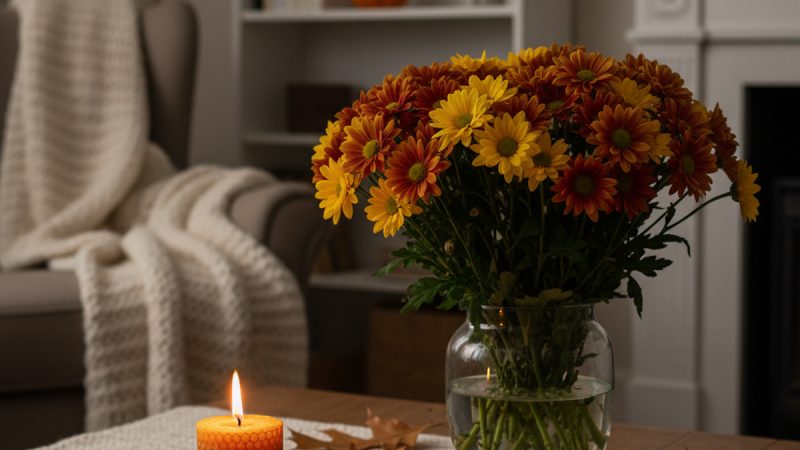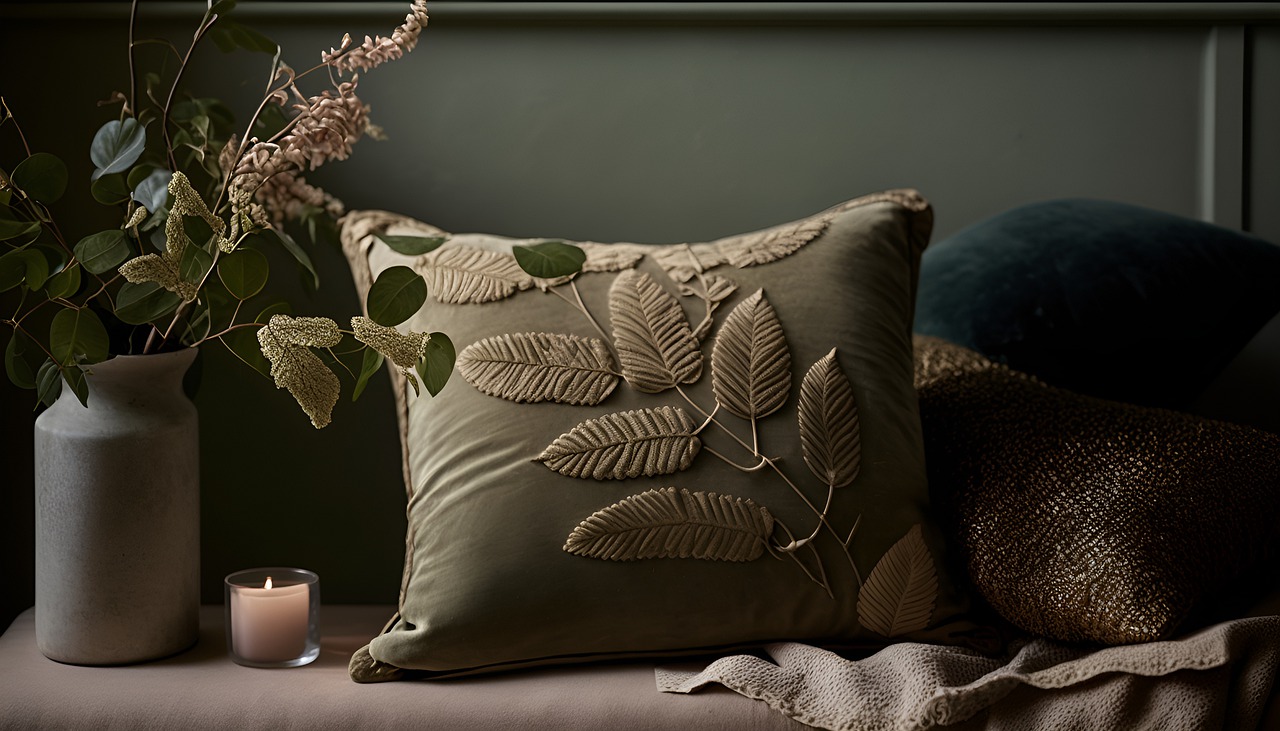Chronic Fatigue Syndrome

MCS, Toxic Mold, Sick Building Syndrome, Chronic Fatigue Syndrome and Poisonous Pollen
Many times it is very difficult to figure out what is causing someone’s allergies, or their symptoms that may seem like allergies. Likewise, there are numerous other environmentally triggered illnesses where it can also be very tricky to pin down exactly what is making someone so sick. Often people who suffer from undiagnosed illnesses may be experiencing multiple chemical sensitivities (MCS), chronic fatigue syndrome (CMCS, Toxic Mold, Sick Building Syndrome, Chronic Fatigue Syndrome and Poisonous PollenFS), unusual pollen or mold reactions, food allergies, fibromyalgia, or even combinations of one or more of these.
When a substance is making someone sick, the most logical thing to do is to find out what that substance is, and then remove it. Avoidance of the illness-triggering substance is always the first and foremost line of defense in these cases. In this article I’d like to explore some of these triggers.
First, a few observations: Repeated exposure to an allergenic or toxic substance is usually what triggers the reactive symptoms. Once a person has become hyper-sensitized to something, each time they come in contact with it their problems become worse. Often the thing(s) that is making someone sick is something that they are in close daily contact with. It could be many things: some food they’re eating, some prescription drug they are taking, pollen from their own front or back yard, pollen from the street trees out front, chemicals off-gassing from construction materials in their house, toxic mold spores being produced by shrubs or trees in the yard, or mold spores growing inside their house. All of these, and more, can ruin a person’s health; can kill them if it gets bad enough.
Last spring I gave a talk to a group of allergists from San Luis Obispo and Santa Barbara Counties (California). I mentioned that I liked to see allergists hire college horticulture students to map the exact species of plants growing in a patient’s yard. Sometimes, as I explained, without knowledge of exactly what is growing closest to them, it is next to impossible to figure out the problem.
One of the allergists then told me this true story: They had a patient, a woman in her 60’s, from Santa Barbara, who was extremely sick and getting sicker by the day. She was having classic symptoms of both allergy and asthma, was not responding to any type of treatment, and they were afraid that she would die. And so they took the unusual step of sending someone from their office out to her house to look it all over.
The allergist’s assistant didn’t find any high allergy plants in her yards. He didn’t find any strange houseplants in her house, nor any unreported pets or anything of the sort. He saw no walls, windows, bathrooms or anything that appeared to pose a mold problem. The house was an older one, and he doubted that it was off-gassing chemicals. He was about to give up when he noticed a door he hadn’t seen before. “Where does that go?” he asked her.
“To my basement,” she told him.
Now, because basements are rare in California, he was surprised to discover this. When he opened the door, turned on the lights and walked down the steps he was even more surprised. There, growing all over the cement floor of her basement were thousands of unusual looking mushrooms. When he asked her why they were there, she told him, “Well, they just started to grow there and I let them grow since they were so pretty.”
I’m sure you can figure out the rest of the story. He took samples of the mushrooms back to the office and the woman was tested for spores from these same fungi and it turned out that her entire system was swamped with these allergenic, poisonous mushroom spores. The mushrooms were of some rare species native to the southeastern US and no one ever did figure out how their spores had arrived in that lady’s basement and started growing.
The mushrooms were removed, the basement was cleaned up and the patient regained her health.
Another interesting episode of trigger sleuthing: A woman from Lompoc, California asked me to look over the yard of her apartment to see if I could figure out what was making her so sick. She was in her late 30’s, married, had always enjoyed excellent health, but was getting sicker and sicker. She was starting to forget things, had headaches, sore throats, was always tired, often had stuffed up sinuses, and now and then would slur her words while she was talking. More and more she would forget what she was saying right in mid-sentence.
I looked over her yard, found a male ash tree and a male (“fruitless”) mulberry tree, and a hedge of male junipers. I suggested she ask the landlord to remove all of them and replace them with pollen free female plants. However, since it was still late winter and none of these plants were yet in bloom, I doubted that this was a pollen problem and asked to see inside the apartment.
It was a nice enough apartment, neat and orderly, and she told me that their rent was very reasonable. Inside I discovered that one wall in her bedroom, next to her bed, looked moldy. I also found another wall, a wall in the living room that also looked moldy. Outside in the yard I discovered that the rainbird sprinklers for the lawn would hit the wall directly every time they went around. There had also been a leak in the roof, directly over the bedroom wall. I suggested she hire someone to do an inside and outside mold count for her. This she did and it was found that the mold spore count was high in the yard, and even higher inside the house. It was highest in her bedroom.
She then confessed that she had tried to clean up all this mold, several times, using soap and water. Afterwards she had felt even sicker.
I suggested that she explain all of this to the landlord, and immediately move out until it was fixed.
She did explain it all to the landlord, but she did not move out. The landlord hired someone who supposedly cleaned it all up but she just got sicker and sicker.
One day a few weeks later she called me up again. She was crying and told me that her doctor said that she had MS. The symptoms she was having certainly did seem like multiple sclerosis but I didn’t think that was her problem. As we talked she would lose it, stutter, slur her words, forget what she’d just said.
She said that she’d had to take a leave of absence from her job since she just couldn’t work any more. When I asked her what she was doing instead of working, she said she was mostly just lying in her bed. It was about all she could do. “That bedroom,” I told her, “is killing you.”
I called her back later and got her husband on the phone. He was now starting to feel kind of sick himself. “Look,” I said, a little angry now, “ get the hell out of there! Leave that apartment and do it tonight. Pack a few things, go to a motel and check yourselves in. Tomorrow you can tell your landlord what you had to do. If they won’t pay for the motel bill, I’ll help you find a lawyer and you can sue him.
They moved out of the apartment that night and into a nearby motel room. He took some time off work and the two of them just hung out at the motel, watching TV, eating in a restaurant around the corner, and they slept a good deal. The landlord (I think he was finally afraid of a lawsuit) did agree to cover their motel bill while this was being figured out.
On the phone I advised her husband that he ought to start looking for a new apartment. He told me that he was starting to feel more “like himself again,” and agreed to look for a different place to live.
They stayed at the motel for two weeks and by the time they moved into their new apartment she too was starting to feel a little better. I insisted that her husband move everything from their old apartment himself. That all their clothes, everything, had to be thoroughly cleaned before he brought it into their next place. I didn’t want her to even walk in that door again, and she didn’t.
As I write this now, it has been just over two years since they moved out of that mold spore-ridden apartment. Little by little she started getting better, the slurring of words stopped, the disorientation stopped, eventually all the symptoms disappeared. Two months after they moved she went back to work. Six months later she felt so good she started taking night classes at the local college. They are now both working full time, both are taking advanced computer classes in the evenings and they are doing great. There’s been no more talk about her having MS either.
Poisonous pollen
This case involved my own daughter, Naomi, about 16 years ago now. It was springtime and we had just moved into a new house (new to us but not a new house) in San Luis Obispo. Soon afterwards Naomi, who was 10 years old then, started to get sick. She would wake up each morning with a sore throat and a headache. We took her to doctors but none of them was able to diagnose the problem or solve it. By summer time she started feeling better and all her symptoms vanished.
The next spring it started in again and Naomi got sicker and sicker. We took her to an allergist and she was tested for many things but nothing was discovered. At nighttime she would usually feel quite a bit better, but the next morning she would feel miserable. My wife and I scoured her room, repainted it, replaced the rugs, did everything possible (we thought) to clean it up, but still she was sick and getting sicker.
One day I was in the backyard playing wiffle ball with my 8-year-old son, Josh. I pitched a ball to him and he slammed it foul, straight into this large shrub that was growing right next to Naomi’s bedroom window. A big puff of gray pollen floated up from the shrub (a Yew Pine, Podocarpus macrophyllus). “Look at that,” I said to Josh. ‘Look at all that pollen!”
My son looked at me and asked, “Dad, is that a male tree?” (He was of course growing up in our house and I was always talking about male trees, about pollen-free female cultivars and so on.)
I was embarrassed, since it was indeed. “Yeah,” I said, “it is a male.”
“Then what is it doing in our yard?” he asked me.
I felt almost floored. I’d kept the shrub because it was pretty and at the time I had not read or heard of allergic problems from Podocarpus pollen. But I didn’t feel like trying to explain this to an 8 year old. “When we get done playing ball,’ I said, “we’ll get rid of it.”
We chopped that old Yew Pine down, dug out the big, tough stump, and the next week we replaced it with a perfect-flowered pineapple guava bush. I thought that was the end of that story, but again I was wrong.
Several years later I happened to mention to a friend about that wiffle ball hitting that bush and all the pollen, and my wife, Yvonne, said, “You forgot what happened when you and Josh chopped down that tree, didn’t you?”
And then she reminded me of Naomi and the strange sickness no doctors could figure out. “Once you guys got rid of that tree,” she said, “Naomi got better right away and she’s been fine ever since.
Suddenly it all made perfect sense. Yew Pines are related to true Yews, of the genus Taxus. From Taxus trees is made the powerful chemotherapy drug, Taxol, used against breast cancer. Podocarpus, like Taxus, is a very poisonous species. It is all poisonous, leaves, sap, roots, stems, and yes, the pollen too. My own daughter had been getting poisoned, grain-by-grain, as she slept. Pollen grains of Yew or Yew Pine are so small that they can easily pass right through a window screen. No wonder Naomi felt so bad each morning.
One day not too long ago I shook some of this pollen from a different male Yew Pine onto a glass slide. I then placed a little piece of window screen over the slide and photographed what I saw through my microscope. That photo is posted on this website, and when you look at it you can see for yourself; that window screen was no protection at all.
I now know that this same exact situation is not rare at all; it is quite common. Yews and Yew Pines are used all the time as foundation shrubs in landscapes. The landscapers typically plant them right next to bedroom windows. And almost all of these plants sold are male, pollen-producing clones.
Green Buildings, Green Construction
One of the best things to come along in quite some time is the trend now toward green construction; building houses and other building where no materials are used that will later make people sick. In the past many buildings and often mobile homes were built with materials that off-gassed toxic chemicals. The people who worked or lived in these buildings frequently got terribly sick and sometimes died from this exposure. These toxic construction chemicals in particular affect children. There are new laws in most states now to prevent this sort of contamination but contractors who understand the problem and go out of their way to avoid it are building the safest buildings.
In 1999 the American Lung Association in Richmond, Virginia contacted me. They were almost finished building a new Health House, a Lung Association regional headquarters where everything possible had been done to assure that this building would be a healthy place to work in. They were calling their new green construction place the Breathe Easyâ Office, and they wanted a new landscape to surround the building, one that would be beautiful, functional, and as pollen free as possible. They wanted an allergy free landscape to top off their Breathe Easyâ Office.
We worked together on this and today that landscape graces that healthy headquarters. I’ve given talks at that particular office and all the people who work there tell me that they love working there. The air there is clean and it just feels good.
People from other state’s Health Houses and Healthy Houses and versions of these have also been using my work to do the same thing. They feel, as do I, that I makes no sense at all to build a green building, a Health House, and to then surround it with a typical high pollen, high asthma and allergy causing landscape. This is a development that warms my heart to see.
There are many true stories out there about people made terribly sick because of something allergic or toxic that they have right close to them. Sometimes the doctors can’t figure out what is wrong with these people and all too often it is eventually implied that they are perhaps psychosomatic; that it might be best for them to see a psychiatrist or a psychologist. But the problem might well be perfectly physical. The real problem often is that no one has figured it out.
The Author:
Tom Ogren is the author of five published books including: Allergy-free Gardening, Safe Sex in the Garden, and as of April 2004, AOL Time Warner Book’s, What the Experts May NOT Tell You About: Growing the Perfect Lawn. Visit with Tom at his website, www.allergyfree-gardening.com
** A book I read some years ago, Allergic to the Twentieth Century, impressed me a great deal. It’s out of print now, which is a shame, but last I checked there were used copies available on-line at a reasonable price. I’d certainly recommend it to anyone interested in MCS or Sick Building Syndrome:
Allergic to the Twentieth Century: The Explosion in Environmental Allergies–From Sick Buildings to Multiple Chemical Sensitivity by Peter Radetsky Little Brown & Company; (July 1997) ASIN: 0316732214
Photo. D.T.








